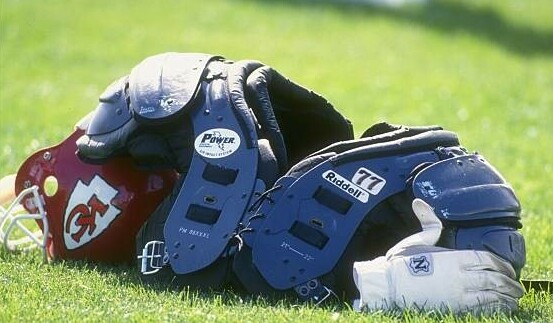
This post contains affiliate links. If you make a purchase through these links, I may earn a commission at no extra cost to you.
Are you gearing up for fantasy football season? If you are, you’re joining millions of fans who immerse themselves in this strategic and fun pastime each year. But before you jump in, it’s important to understand what you’re signing up for. A fantasy football league isn’t just a game; it’s a virtual competition where you’ll act as the owner and manager of your own football team.
In essence, a fantasy football league allows you to build a team with real NFL players, and score points based on their real-world performances. Your drafting and management skills, strategic thinking, and sometimes just plain luck, will determine how well you’re team finishes.
You might think all fantasy football leagues are cut from the same cloth, but you’d be surprised. There are a variety of leagues, each with its own rules and scoring systems that can drastically change the way you play the game. Whether you’re new or a seasoned pro, choosing the right league and understanding the scoring system, is crucial to your success.
Widely considered the vanilla of fantasy football is the Standard scoring system. Don’t be mislead by the sound of it’s simplicity, though. It is still filled with the excitement of watching your predictions and strategies play out, but sometimes, classic flavors are just still the best way to go, for so many out there.
Standard Scoring Leagues
If you’re new to fantasy football, or just prefer and appreciate the traditional approach, Standard scoring leagues might be right for you. Just like vanilla ice cream, a classic choice and widely beloved, the Standard scoring league is the foundation of many a fantasy football experience. In a Standard scoring league, players earn points through touchdowns, yardage, field goals and extra points, and various defensive achievements, with a straightforward point system that’s easy to grasp.
Opting for a standard scoring league comes with its perks, especially for those just gearing up in the fantasy football world. It offers a less complicated scoring system, making it easier for beginners to join in and feel part of the action without getting overwhelmed by intricate scoring rules. Think of it as the gateway into fantasy football, giving you a solid understanding of how to evaluate players based on their fundamental contributions to the game.
However, don’t think standard scoring leagues lack depth. They just present a different kind of strategy challenge. These leagues tend to prioritize running backs and frequent end zone finders, because passing yards and receptions don’t score as much as they do in other formats. It’s important to note that while it’s simplicity can be inviting, it might also limit the playing field in terms of strategic diversity, for that seasoned pro.
To stay competitive in Standard scoring leagues, it’s wise to keep an eye on emerging trends. For instance, with the NFL evolving into a more pass-heavy league, deep threat wide receivers, with the possibility of long scores, are popular fantasy options, even if they only have 2 or 3 catches in a game. It’s about striking a balance between player performance and your league’s scoring criteria.
Choose something that resonates with you. If you relish a more straightforward approach, then the Standard scoring system just might be your cup of tea. Some fantasy owners, maybe due to the increase in passing in the NFL, like to see players rewarded for being able to haul in a reception.
Point-Per-Reception (PPR) Leagues
 Justin Jefferson’s famous one handed catch on a 4th and long, late in the game.
Justin Jefferson’s famous one handed catch on a 4th and long, late in the game.
I’m going to explain how Point-Per-Reception leagues, commonly known as PPR leagues, shake up the fantasy football landscape. This isn’t just about getting points for yardage and touchdowns; players also earn points for each catch they make, which adds a little spice to the strategy for fantasy owners.
So what is the appeal to a PPR league? PPR leagues will have higher scoring games, more viable player strategies, and an increased importance of wide receivers and pass-catching running backs. These dynamics cater to those who savor a more nuanced approach to team building and player selection.
One of the most significant shifts when playing in a PPR league is your draft tactics. Pass-catchers, even those who may not gain a ton of yards, become valuable commodities. This includes players like a slot receiver who might rack up a lot of short catches but doesn’t necessarily score a lot of touchdowns.
If you want to thrive in a PPR format, pay close attention to the player’s targets—a metric indicating how many times a player is thrown the ball. This stat becomes of the utmost importance for finding those underrated players who can offer consistent weekly performance.
No need to worry though, about abandoning all you know about fantasy football, to participate in PPR leagues. The core principles still apply, but you are going to want to keep in mind that a player simply catching a ball will score you fantasy points, even if that player doesn’t advance for any yards.
If high-scoring affairs and a little more strategic complexity excite you, a PPR league might be your new favorite fantasy playground.
Keeper and Dynasty Leagues: Riding the Long Game
I’m going to wrap things up by discussing keeper and dynasty leagues, which are perfect for those who are in for the long haul. For some fantasy owners, fantasy football isn’t just a single season affair, but a multitude of years engaging in the fun and competition.
In keeper leagues, you’re going to hang on to a limited number of players for the next season. This adds a layer of strategy because you’ll need to think ahead, plan for the future, and sometimes even make sacrifices in the present for a stronger team down the line.
Dynasty leagues take this even further. You’re maintaining your lineup year after year, turning fantasy football into a perpetual cycle of team management. It’s here that you can truly embody the role of a team owner, meticulously shaping your roster over time.
These formats have spiked in popularity because they offer an immersive and continuous experience. They serve as a testament to your expertise and dedication, where the rewards of your decisions today can lead to triumphs in future seasons.
In short, if you like the thrill of starting fresh each year, a Standard or PPR league might be your speed. But if you’re all about nurturing talent over time, handing down your powerhouse players from one season to the next like cherished heirlooms, then keeper or dynasty leagues might be more up your alley.
I really hope that you’ve enjoyed this exploration into the world of fantasy football leagues. As always, I’d love to hear any questions or comments you may have about fantasy football below.
